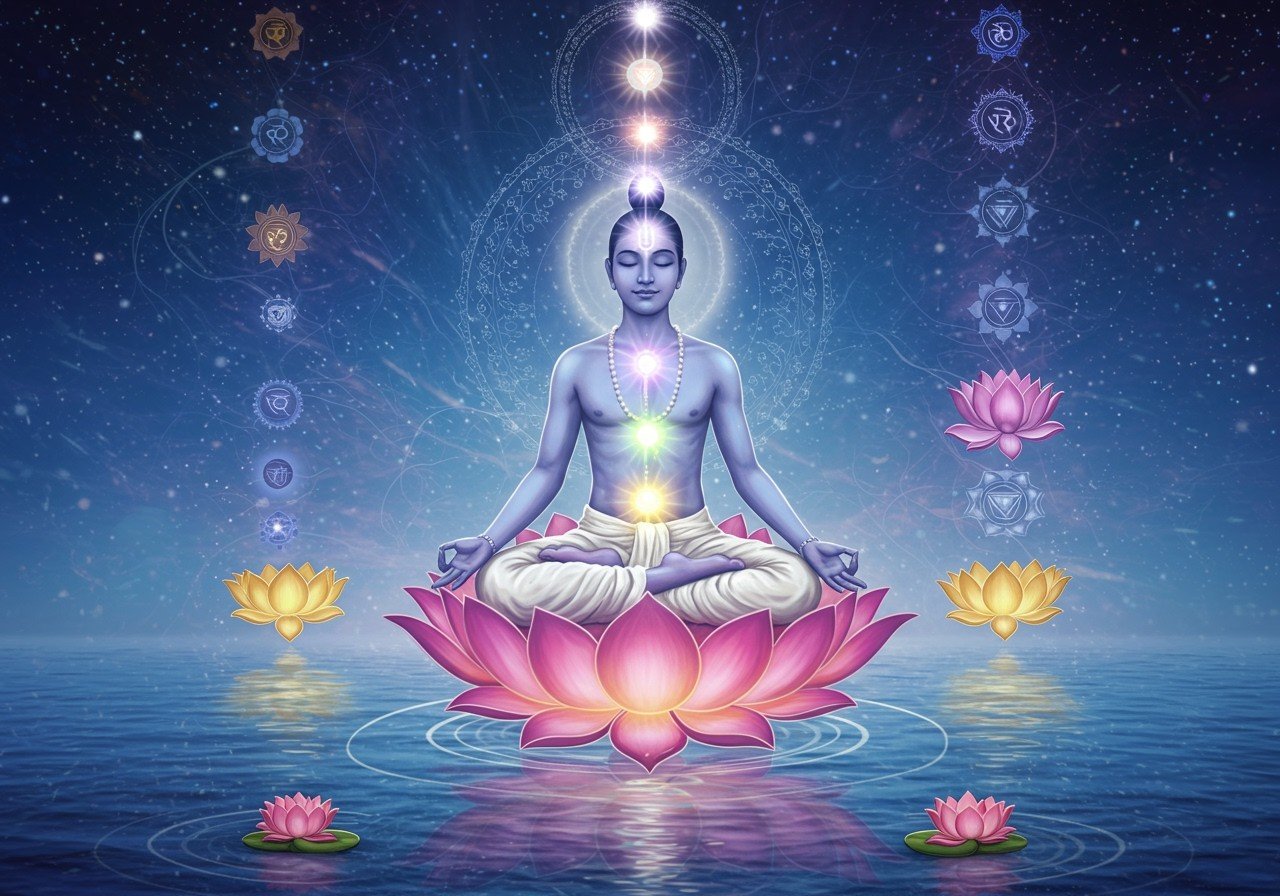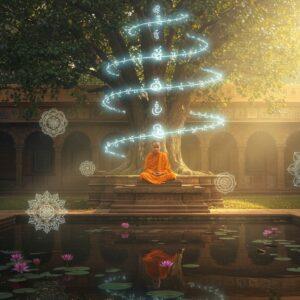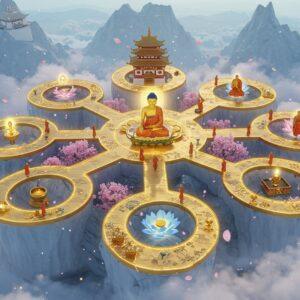
Moksha, also known as Mukti, Vimoksha, Vimukti, and Nirvana, is a central concept in several Indian religions, including Hinduism, Buddhism, Jainism, and Sikhism. It signifies liberation from samsara, the continuous cycle of death and rebirth. Achieving moksha is considered the ultimate spiritual aspiration in human life.
The paths to attaining moksha diverge across various religions and philosophical schools. This exploration delves into the concept of moksha within Hinduism, Jainism, and Buddhism, highlighting the unique perspectives and practices associated with each.
Moksha in Hinduism
In Hinduism, moksha represents the ultimate goal of human existence, alongside dharma (righteous conduct), artha (material prosperity), and kama (pleasure). It involves breaking free from the cycle of reincarnation and uniting the individual soul (Atman) with the ultimate reality (Brahman).
Hindus believe that after death the soul is reborn in another existence, the nature of which is determined by deeds, actions, and thoughts from the previous life. This cycle continues until one attains moksha.
Several paths (yoga or marga) can lead to moksha:
- Jnana Yoga: The path of knowledge and self-realization. This involves deep understanding of the true nature of reality and the self (Atman). The Advaita Vedanta school of thought particularly emphasizes this path. It encourages introspection and contemplation to realize the unity of Atman and Brahman.
- Bhakti Yoga: The path of devotion and love towards a personal God. This path emphasizes complete surrender to a chosen deity or guru with unwavering love, trust, and a sense of unity. Practices include chanting prayers and hymns, listening to divine stories, and dedicating one’s life to spreading the word of God. Read more about Lord Krishna and Bhakti Yoga.
- Karma Yoga: The path of selfless action. This path focuses on performing one’s duties without attachment to the outcomes. All actions are seen as selfless service when performed with awareness and without expectation of reward. It emphasizes fulfilling one’s dharma in every action. Find your Guru for guidance on Karma Yoga.
- Raja Yoga: The path of meditation and contemplation. Raja Yoga involves practices aimed at purifying the mind, stabilizing the body, controlling the breath (pranayama), and ultimately experiencing soul consciousness. It requires disciplined practice and often involves guidance from an experienced Guru.
Finding a yoga that aligns with one’s individual temperament is crucial, often with the guidance of a guru.
Poojn.in offers a wide selection of products to support your spiritual journey, including deity idols, incense, and other puja essentials.
Moksha in Jainism
In Jainism, moksha signifies the liberation of the soul from samsara. It is considered the highest and most noble objective a soul should strive for, leading to a state of perfect bliss and knowledge.
- The Three Jewels: The path to liberation in Jainism involves adhering to the three jewels: Right View (Samyak darśana), Right Knowledge (Samyak jnana), and Right Conduct (Samyak charitra). These represent the core principles guiding a Jain towards Moksha. Cultivating these jewels leads to spiritual purification and detachment from worldly attachments.
- Nirvana/Moksha: Nirvana, often used interchangeably with moksha, refers to the ultimate liberation from the cycle of birth and death. It is a state of complete freedom from all karmic bonds, where the soul achieves its true nature of infinite bliss, knowledge, and perception. This liberated soul is known as a Siddha.
Moksha in Buddhism
In Buddhism, the concept analogous to moksha is Nirvana. Nirvana signifies the cessation of suffering, the extinguishing of desire and ignorance, and the end of the cycle of rebirth (samsara).
- The Noble Eightfold Path: The path to achieving Nirvana is outlined in the Noble Eightfold Path. This path emphasizes right understanding, thought, speech, action, livelihood, effort, mindfulness, and concentration as the essential elements for spiritual progress and achieving enlightenment. It provides a practical framework for ethical living and mental discipline.
- Meditation and Enlightenment: Meditation is a central practice in Buddhism, essential for cultivating a positive state of mind, calmness, enhanced awareness, and focused concentration. Through dedicated meditation, one gains insight into the nature of reality, leading to enlightenment and the attainment of Nirvana. Learn more about overcoming common meditation challenges.
By understanding the different paths to Moksha and incorporating relevant practices, individuals can embark on a transformative journey towards spiritual liberation.
Explore Hindu scriptures for a deeper understanding.


